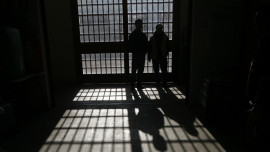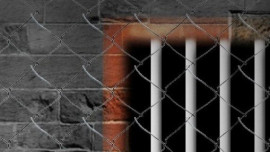
The exhibition has been titled An Interlude and features fourteen diptychs, five individual pieces and a triptych.
Khan told The Express Tribune she had wanted to experiment with different mediums when she started the project. She said she had researched on different spaces to ascertain how she could compare them. Khan said her work dealt with the quiescence of space and the transitory nature of people. “Spaces allow us to understand how people function, the role they play in society and the social strata they hail from. This is why I started working with the spaces of the elite, the middle class and the underprivileged,” she said.

“It is not just a space that defines a person. The objects within the space also influence the people inhabiting it,” she said. Khan said a space devoid of its inhabitants could come across as desolate but objects present there could remind one of what once existed. She said there were still lives more or less in a state of purgatory. Khan said this was why she had titled the exhibition An Interlude.
She said she had earlier concentrated on huge figure paintings but had eventually gotten bored of the exercise. Khan said the desire to do something different had compelled her explore small canvases. She said she had been greatly inspired by the work of an artist who worked with small canvases. Khan said she had thoroughly enjoyed working with small canvases. She said she had relied on her gut feeling to pair the pieces. Khan said some images portrayed parts of her house and others depicted servant quarters and motorcycle-rickshaws.
Color Art Gallery curator Zarah David said Khan’s work had impressed her with its minimalist nature. She said she had not seen a lot of artists evolve in this manner. David said Khan had executed a large piece for her thesis but had told her that she wanted to go small this time. “An artist is actually growing at this stage. One has to give youngsters a chance,” she said. David said the board decided who to exhibit. “If we do not like anyone’s work we go without a show for a month. We are not very commercial,” she said.
Huma Mulji, who teaches at the Beaconhouse National University (BNU) told The Express Tribune that she had enjoyed the exhibition. “Visually, I found the treatment of the surface very interesting as it has a luminosity of tempera.
The pairing of two pieces (diptyches) is really intriguing because they are ambiguous at one level. The relationship between the two is open to individual interpretation, she said.
The exhibition will conclude on January 17.
Published in The Express Tribune, January 3rd, 2014.

















COMMENTS
Comments are moderated and generally will be posted if they are on-topic and not abusive.
For more information, please see our Comments FAQ